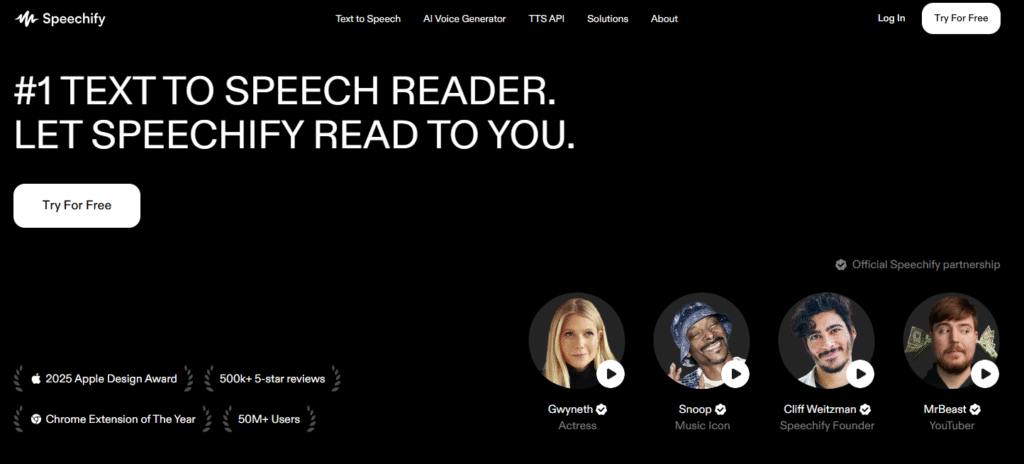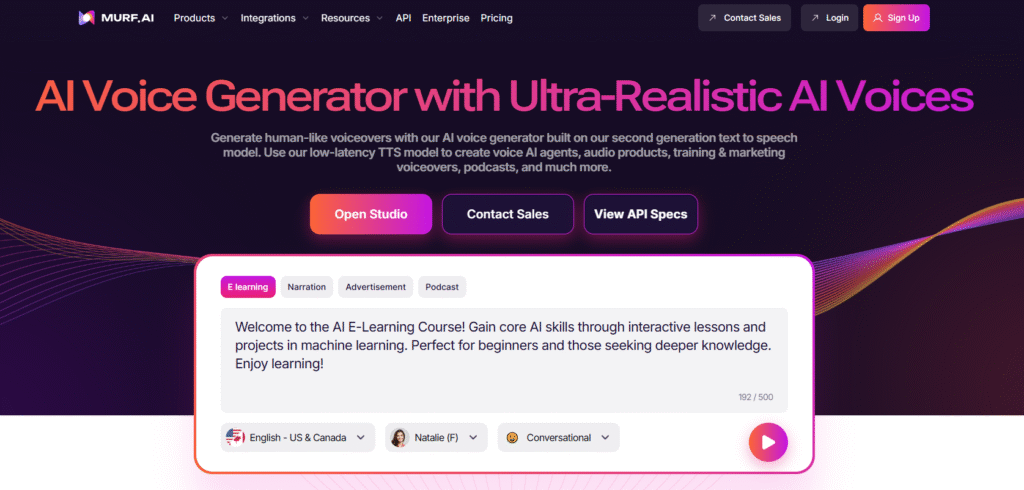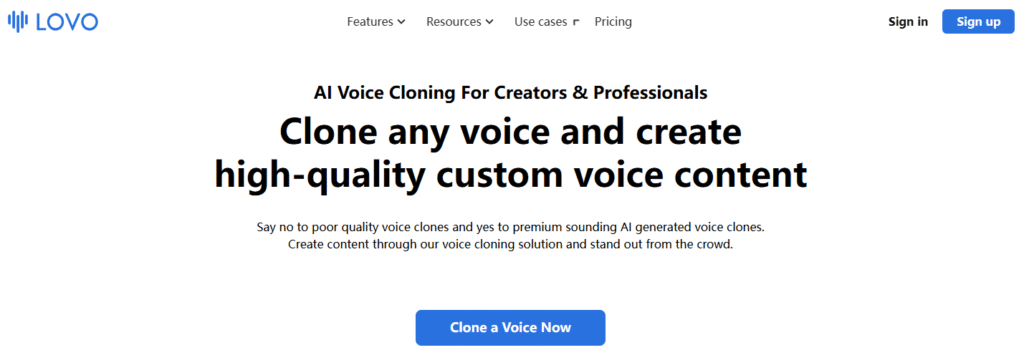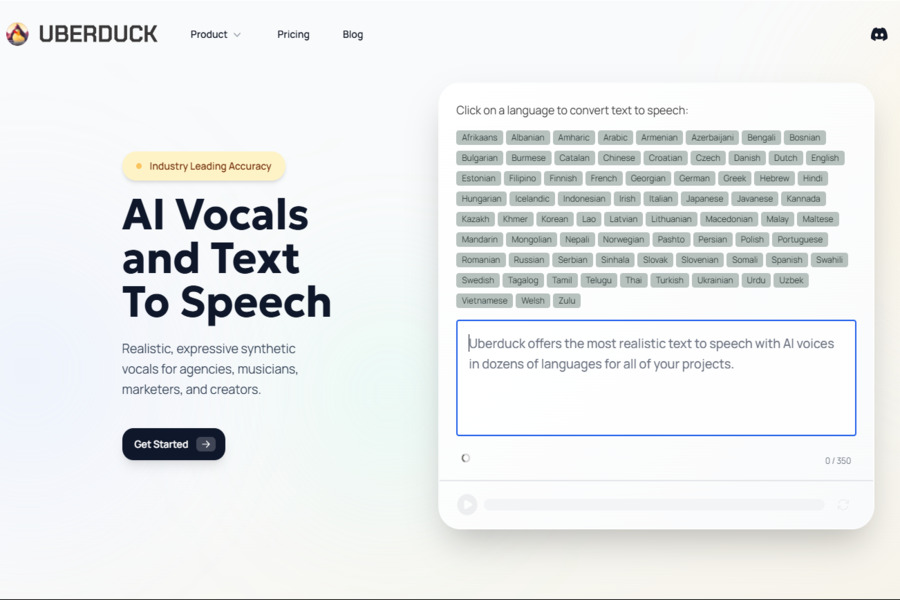Remember when Uberduck was the go-to platform for AI voice generation? The landscape has dramatically changed since its peak, and today’s Uberduck alternative options don’t just replicate what we lost—they’ve completely transformed what’s possible with synthetic speech.
If you’re among the creators feeling stranded by Uberduck’s limitations, you’ll be pleasantly surprised by the sophisticated tools that have emerged to fill the void. Let’s explore the platforms that are genuinely worth your attention and creative energy in 2025.
What Is Uberduck?
Before we dive into the alternatives, let’s acknowledge Uberduck‘s significant impact on the AI voice scene. What began as an ambitious student project quickly evolved into a cultural phenomenon by 2021, democratizing voice synthesis for creators worldwide. Its appeal lay in an incredibly diverse voice library and the unique ability to generate not just speech but surprisingly convincing singing and rapping vocals that avoided the robotic tones plaguing earlier text-to-speech systems.
However, Uberduck’s foundation proved unstable when legal challenges around voice likeness rights emerged. As major platforms tightened their policies, Uberduck was compelled to remove substantial portions of its voice catalog. While the platform still exists, many longtime users describe it as a shadow of its former self, with frequent “voice unavailable” messages disrupting creative workflows.
For those who witnessed this evolution, Uberduck’s story serves as an important lesson: innovative technology alone isn’t sufficient without sustainable, ethical voice sourcing practices. This understanding is precisely what the new generation of voice AI platforms has embraced.
6 Best Uberduck Alternative Platforms That Understand Creator Needs
1. Speechify

Originally developed to help its dyslexic founder, Speechify has grown into a robust voice AI platform featuring over 200 commercial-grade voices across 30+ languages. What establishes Speechify as a superior Uberduck alternative isn’t just its extensive library but its remarkable processing speed.
The platform allows users to consume content at up to 900 words per minute while maintaining comprehension-friendly pacing through advanced AI algorithms. Its seamless cross-device synchronization means you can start converting a document on your desktop and continue listening on your mobile during your commute, creating uninterrupted workflows for content creators.
Pros:
- Extensive voice library with genuinely natural intonation patterns
- Rapid processing that maintains audio clarity at high speeds
- Perfect synchronization across all your devices
- Human-like prosody that avoids robotic delivery
Cons:
- Free version limited to 1,000 characters per conversion
- Premium pricing may deter casual users
- Fewer voice customization options compared to specialized platforms
2. Murf.AI

Murf.AI positions itself as the reliable professional partner rather than the flashy newcomer, offering 200+ voices and deep API integration for teams requiring consistent branding across multiple projects. The platform’s standout feature is its AI dubbing capability, which automatically converts content into 20+ languages while preserving emotional nuance—invaluable for creators targeting international audiences. Murf’s “Voice Installer” for Windows applications represents another significant advantage, allowing direct integration with editing software like Premiere Pro and eliminating tedious export-import cycles.
Pros:
- Comprehensive integration support including APIs and plugins
- Emotionally intelligent dubbing across multiple languages
- Windows Voice Installer streamlines creative workflows
- Collaboration tools maintain brand voice consistency
Cons:
- Voice cloning restricted to highest pricing tier
- Functional interface lacks visual appeal
- Rendering delays during peak usage periods
3. FakeYou

Despite its playful name, FakeYou represents a serious Uberduck alternative with an astonishing collection of over 3,900 voices across eight languages. For just $7 monthly, creators access an incredibly diverse range of vocal styles, from vintage radio announcers to specific character archetypes.
The platform’s machine learning algorithms excel at voice conversion, processing both text and audio inputs with impressive fidelity. FakeYou’s intentionally minimalist interface ensures virtually no learning curve—just input your content and generate—making it ideal for creators who prioritize exploration and variety over polished editing features.
Pros:
- Unmatched voice selection for niche and nostalgic tones
- Streamlined interface that emphasizes simplicity
- Customizable pitch and pacing without complicated menus
- Budget-conscious pricing accessible to independent creators
Cons:
- No built-in recording functionality
- Lacks advanced editing tools found in professional suites
- Inconsistent voice quality across different models
- Limited language support compared to globally-focused competitors
4. ElevenLabs

When ElevenLabs entered the scene, it fundamentally redefined expectations for voice cloning realism. The platform’s proprietary technology captures subtle vocal characteristics like micro-expressions, breath patterns, and human imperfections that most text-to-speech systems eliminate.
Their voice cloning requires just minutes of sample audio to produce remarkably convincing replicas. For technical enthusiasts, ElevenLabs offers granular control over “stability” and “style exaggeration” parameters, providing precise adjustment over how faithfully the output replicates the original voice versus taking creative liberties.
Pros:
- Unprecedented realism that often passes audio Turing tests
- Precise control over cloning accuracy and creative interpretation
- Exceptional audio quality with minimal artifacts
- Expanding language support with culturally-aware intonation
- Rapid preview generation for efficient experimentation
Cons:
- Requires high-quality source audio for optimal cloning
- Audio-to-audio features still in development phase
- Higher pricing tiers become expensive for frequent users
- Strict usage verification to address ethical concerns
5. Lovo AI

Lovo AI transcends basic text-to-speech functionality to offer a complete audio production environment. With 500+ voices spanning 100 languages, integrated video editing, automatic subtitles, and even AI scriptwriting assistance, it truly embodies an all-in-one creative platform.
The “Smart Voices” feature uses contextual analysis to automatically adjust emotional tone within sentences, transforming flat scripts into dynamic narratives. For creators producing serial content, Lovo’s voice cloning combined with scene-based editing proves revolutionary—clone a host voice once, then adapt it for different segments with appropriate emotional coloring.
Pros:
- Extensive voice library including exclusive “Genny” models
- Emotional range preservation in custom voice cloning
- Professional audio/video editing within a single platform
- Context-aware tone adjustment via Smart Voices
- Ideal for long-form projects like podcasts and documentaries
Cons:
- Higher pricing than single-purpose alternatives
- Significant learning curve due to feature richness
- Many advanced features require premium subscriptions
- Potential overkill for simple voiceover needs
6. TopMediai

While competitors concentrate on mainstream languages, TopMediai distinguishes itself with support for over 190 languages and accents. Its library of 3,200+ voices covers everything from widely-spoken languages to hyper-niche dialects. The platform provides granular real-time control over pitch, speed, and volume parameters, plus speech recognition for voice-to-voice conversion.
Content marketers will appreciate the bulk processing capability—upload a CSV file containing multiple scripts and receive dozens of localized versions automatically. The integrated AI music generator enables scoring videos and adding voiceover in a single session, streamlining workflows for solo creators managing multiple roles.
Pros:
- Unparalleled 190+ language support for global reach
- Authentic regional cadence and natural delivery
- Real-time parameter adjustment during preview
- Speech-to-speech conversion for creative reinterpretation
- Bulk processing efficiency for large campaigns
Cons:
- Premium voices require subscription access
- Demands reliable internet for cloud processing
- Documentation sometimes lags behind feature updates
- Occasional interface translation issues in less common languages
Final Words on Uberduck Alternative Solutions
The decline of Uberduck ultimately represented a necessary evolution in the voice AI ecosystem rather than a simple setback. It pushed creators and developers alike to demand higher standards—ethical voice sourcing, improved quality, and tools that respect both content creators and voice actors.
The six platforms we’ve examined don’t merely fill the void left by Uberduck; they’ve established a new foundation where voice synthesis serves as a genuine creative partner rather than a technological novelty.



